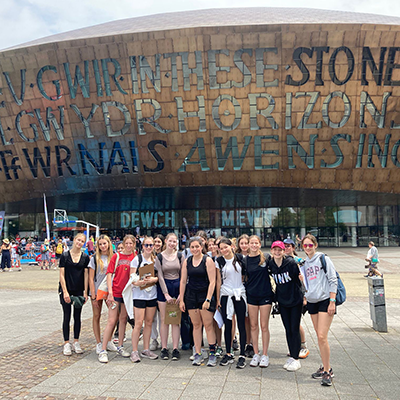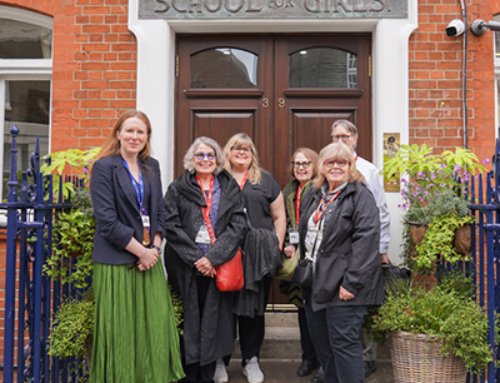Day 1 of our trip started in high spirits… till our train was cancelled! However, after some stressed but skilful rearranging from Miss Mackenzie and Miss Hammond, we were back on our way, arriving at Newton Beach after 2 trains, a bus ride and a coach ride. At this point we were feeling rather rumpled from our escapade, but were soon reinvigorated by an ice cream (thanks Miss Mackenzie!) and a late lunch. Then, we were on the beach and starting with our costal investigation led by our FSC leader, Beatrix.
We looked into sediment arrangement along the beach due to long shore drift and sediment size and angularity due to erosion. Then we investigated beach profile with ranging poles and a clinometer and analysed the visible flood defences, like rock groynes, sand dunes and sea walls. With our costal data collection complete, we piled back onto the coach, where many of us promptly fell asleep and woke up at the Margam Field Study Council Site. After our introductory talk and a short break in our rooms, we had our dinner and an evening lesson going over our coastal investigation. We looked into how to manage coastlines and coastal defences and the differences in sampling strategies and qualitative and quantitative data. Finally we reviewed our hypothesises made in preparation for the trip and wrote up our risk assessment of working at the beach. After our long day, we all collapsed into bed before day 2.
After being woken up on Saturday and having breakfast, we had a morning lesson, where we prepared for our trip into Cardiff that day to investigate the regeneration of Cardiff Bay. We looked into the history of Cardiff Bay for context as to why it was in need of regeneration and the aims of its regeneration. After constructing our hypothesis and risk assessment of going into the city, including hazards like stranger danger, we hopped on the bus and drove into Cardiff. Armed with clipboards, we started with a land use survey where we categorised buildings depending on their use and did a pedestrian count to see how busy different parts of the Bay were. Together, we did an environmental quality assessment along an 800m stretch from Mermaid Quay along Butetown towards the central business district of the city. With the data we collected, we were able to draw conclusions regarding our hypothesis and reasons why our data turned out the way it did.
We then split off for lunch and snack-buying before meeting up for the last activities of the day. We went out with questionnaires to the unsuspecting public of Cardiff and interviewed them about how successful they thought the regeneration project was. With all our data gathered we were herded back to the coach and went back to Margam. After a dinner of fish and chips, we had another evening lesson filled with graph and diagram making and evaluations of our methods, before we went to bed for our last day at Margam.
After waking up on our last day, we stripped our beds and packed up getting ready to leave. We had our final lesson where we covered our conclusions regarding our coastal investigation and repeated the process with our urban investigation. With a 30 minute break before we had to depart, we took a walk up the estate and met a wide variety of animals, including some llamas, pigs, goats, sheep and bunnies, which received many pets. Once we arrived at the train station, there was time for a quick coffee stop before we clambered onto the train and were on our way to Paddington.
A huge thanks to Miss Mackenzie and Miss Hammond for organising the trip and the FSC centre for hosting us. We learnt so much in the span of 3 days and hopefully will retain it all for our GCSE next year.
Year 10 GCSE Geographer, Katie Garrood















